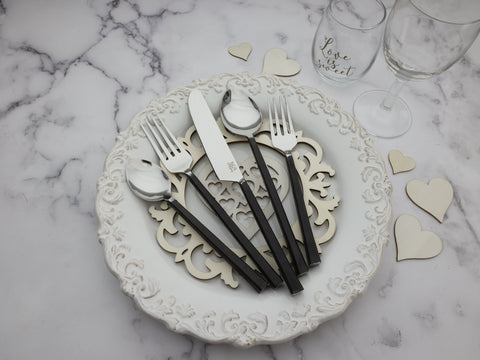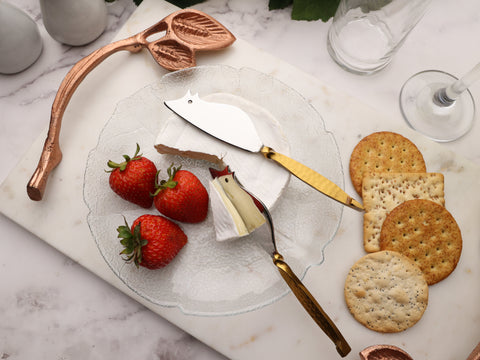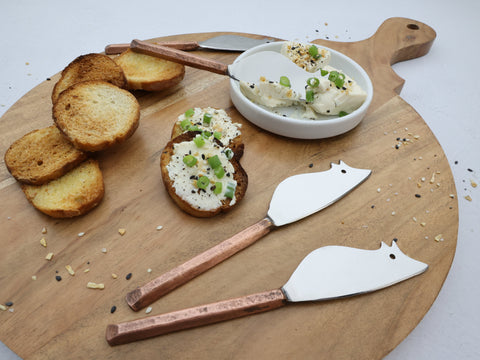There are many social and professional scenarios where proper dining etiquette can confer a clear sense of confidence and control. And, while some of the rules of the table can seem complicated, the reasoning is usually logical, and they all intend to make the dining experience more comfortable and graceful for all.Most often, the biggest point of confusion is the utensils on the table, most notably the range of forks in formal flatware settings.
This detailed guide will explain thoroughly everything you need to know about the salad fork. It will cover identifying it, its position on the table, how to effectively use it step-by-step, and lastly, the non-verbal communication you can make with it. When you have finished this article, you will have complete confidence in navigating any dining occasion.
What is a Salad Fork and How Do You Identify It?
A salad fork is a specific piece of flatware found in traditional silver service that is solely meant for eating salads. Basically, it is made for eating most of the typical ingredients of a salad, some of which are delicate greens, while many may be larger, crisp vegetables.
So, now that we have defined a salad fork, how do you determine which fork is the salad fork at a place setting? In your description, you should focus on three specific characteristics that will help you to easily differentiate between a salad fork and the dinner fork that may feature next to it:
- Length: The salad fork is generally shorter than the dinner fork.
- Width: It is generally a little wider than a dinner fork, making it look a little stockier.
- Tines: A salad fork has four tines (prongs). The most identifying characteristic is often the leftmost tine. A salad fork may be much thicker and wider than the other three tines (with a slight notch or beveled edge).
- Placement: In a standard American place setting, the salad fork will be placed at the far end of the dinner plate (the left side if you are facing the plate).

Why is the Salad Fork Shaped Differently?
The distinctive shape of the salad fork is pure efficiency. Each aspect is designed to address a different situation that would arise if you were eating a salad.
The larger shape provides a larger surface area, therefore when picking up a combination of loose greens, crumbled cheese, or other small toppings, the larger salad fork easily holds all toppings in a single composed bite. No more chasing small items around the plate.
The outer tine, reinforced for a reason, is the best part of the fork. Designed to act as a knife and provide leverage to cut larger pieces of food. You are able to cut with this tine by simply applying gentle pressure to cut with the outer tine. You can cut through a large piece of lettuce, a wedge of tomato, a cucumber, a piece of fruit; you name it. This is a one utensil solution for a more sophisticated, elegant, and overall pleasant dining experience.
Proper Placement of the Salad Fork in a Formal Setting
In a formal setting, the salad fork is placed to the left of the dinner plate. Its exact position relative to other forks, and even items like silverware spoons, is determined by a simple, overarching principle of dining etiquette.

The "Outside-In" Rule of Etiquette
The basic rule when using any place setting is to always go from the outside in. The flatware is positioned in the order of the courses you will be served. Because the salad is usually one of the first courses in the American dining sequence (served ahead of the main entrée), the salad fork is positioned at the first place in line, furthest to the left of the plate. When you finish your salad, your fork and plate will be cleared to leave the next fork in line, the dinner fork, for your main course.
Variations in Place Settings
While the "outside-in" rule is universal, the serving order of a salad can vary culturally, which affects the fork's placement or use.
- American Style: The salad is served before the entrée. The salad fork is placed to the left of the dinner fork.
- European (Continental) Style: Salad is generally served post entrée, as a palate cleanser before cheese or dessert. In this case, you will have eaten with your dinner fork for the main course. Your place setting may have been cleared, and a new, smaller fork brought for the salad course. In some traditions, you may also have used the dinner fork for your salad, post-entrée.
A Step-by-Step Guide to Using a Salad Fork
Using a salad fork correctly is a matter of technique and poise. The goal is to eat gracefully and efficiently.
Step 1: Holding the Fork
Hold the fork style with a relaxed grip, and the handle rests between your thumb, index finger, and middle finger like a pencil. There are two general dining styles that determine how you hold the fork during the meal:
- Continental Style: The fork stays in the left hand with tines facing down, and the knife in the right hand is used to cut the food and/or place food onto the fork. This approach is very efficient because it does not require changing hands.
- American ("Zig-Zag") Style: The fork starts in the left hand for cutting (by the knife is in the right hand). After cutting a piece of food, the knife is placed on the beat of the plate, and the fork is switched to the right hand to eat it, with the tines facing up.
Step 2: Cutting Food with the Fork
This is where the fork's special design comes into play. When you encounter a large piece of lettuce, a thick vegetable, or any item too large for one bite, follow this technique:
- Use the tines of the fork to gently pin the food item to the plate.
- Position the reinforced leftmost tine over the spot you wish to cut.
- Apply firm but gentle downward pressure to slice through the item. Avoid a sawing motion; it should be a clean push.
- This technique can be used for most salad ingredients, making a dinner knife unnecessary for this course.
Step 3: Eating with the Fork
After cutting the food into bite-sized pieces you can eat with grace and style. You can gently stab items with the tines. If the food is a mixture of ingredients- greens with smaller toppings for example- it would be unusual to use the wide edge of the fork as a scoop to gather a bit of different flavors and textures.

How to Signal You Are Pausing or Finished
Your flatware is a wordless communication device when it comes to communicating your status to the service staff.
The "Resting" or "Pause" Position
Let's say you are in the middle of your meal and you need to pause to take a sip of your drink or talk to someone else at the table. You want to put your fork in a position that indicates you haven't finished yet. To properly signal this, you rest your fork on your plate in an inverted "V" position (the tines of the fork angled towards the center of the plate). This signals the server not to clear your plate.
The "Finished" Position
When you are completely done with your salad, you will signal to the server that you have finished by putting your fork on the plate in a parallel position. The handle of the fork will be approximately at the 4 o'clock position with the tines towards the 10 o'clock position. If you had used a knife it would also be placed parallel with the fork. This is the universal signal that you have finished the course and signals the server to clear your plate.

Key Takeaways for Using a Salad Fork
There are a few basic rules governing the use of a salad fork, and getting comfortable with them can be an easy way to establish confidence when eating in any setting. Please remember the following:
- Identification: the salad fork is narrower and smaller than a dinner fork (the fork is put farthest to the left of your plate).
- Main rule: follow the "outside-in" rule for utilizing utensils.
- Function: Use the special reinforced tine for cutting larger salad elements on your plate.
- Signaling: Use the "resting" (V-shape) and "finished" (side-by-side, parallel) positions to silently communicate with staff.
Knowing these things is not about adhering to rigid traditions, but rather about navigating social, and professional situations with poise, respect, and self-assurance without effort.



